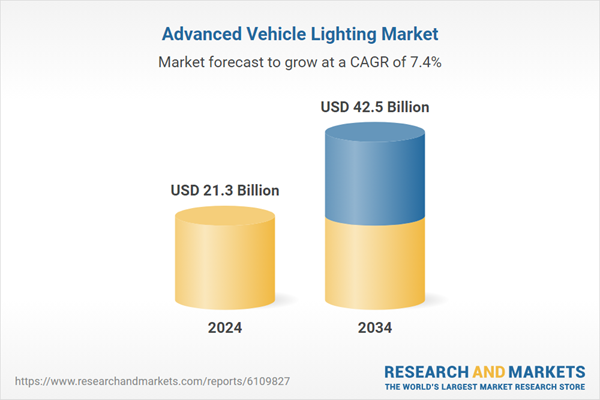Automakers are heavily investing in dynamic lighting systems that can communicate with pedestrians and other vehicles, especially in conditions with limited visibility. As competition intensifies in the automotive sector, manufacturers are leveraging complex lighting designs as a distinctive brand signature. Features like dynamic turn signals, 3D taillights, and interior ambient lighting are now essential styling elements, particularly in electric and luxury vehicles.
Flexible LED and OLED technologies allow automakers to create highly customizable and animated lighting effects that significantly boost a vehicle’s identity and visual appeal. These adaptable lighting solutions can be shaped and integrated into various parts of the vehicle, offering designers the freedom to develop unique signatures that set each model apart in a competitive market. The ability to program dynamic animations - such as sequential turn signals, welcoming light shows, or mood-enhancing interior lighting - adds a layer of sophistication that resonates strongly with consumers seeking futuristic and personalized features.
In 2024, the passenger cars segment held USD 14 billion. Regulatory mandates worldwide, such as the adoption of daytime running lights (DRLs) and adaptive driving beam (ADB) systems, are compelling original equipment manufacturers (OEMs) to integrate advanced lighting technologies. These features not only improve visibility during both day and night but also ensure compliance with international safety standards. As governments enforce stricter lighting regulations, mainstream passenger cars are increasingly outfitted with such systems, pushing demand for advanced vehicle lighting higher. Furthermore, consumer interest in premium, immersive interiors is driving automakers to install multi-color LED strips, synchronized mood lighting, and customizable light themes to create a sophisticated in-car experience.
The OEM segment held a 71% share in 2024. Advanced lighting systems have become crucial in defining vehicle design and reinforcing brand identity for manufacturers. Signature LED DRLs, animated welcome lights, and configurable taillight designs contribute to making vehicles instantly recognizable while supporting marketing campaigns focused on innovation and luxury. To stand out in a crowded marketplace, OEMs are dedicating significant resources to lighting research and development, aiming to create striking, distinctive designs that attract consumers and differentiate their offerings.
North America Advanced Vehicle Lighting Market held a 25% share in 2024. The U.S. National Highway Traffic Safety Administration (NHTSA) is increasingly supporting regulations that permit adaptive driving beam (ADB) headlights and other intelligent lighting technologies. These policy shifts encourage automakers to adopt advanced lighting systems that enhance on-road safety, reduce glare, and comply with evolving federal safety standards, generating greater market opportunities for high-quality lighting solutions. Additionally, the rapid growth of electric vehicles (EVs) and autonomous cars in the U.S., spurred by government incentives and strong consumer interest, fuels demand for sophisticated lighting technologies such as LED matrices, LiDAR-integrated headlamps, and communication-focused lighting features that are critical for next-generation vehicle safety and performance.
Leading players in the Global Advanced Vehicle Lighting Market include OSRAM, ZKW, Koito, Lumileds, Forvia, STANLEY, and Valeo. Together, these companies hold a significant portion of the global market share, competing vigorously through innovation and strategic positioning. To solidify their presence and strengthen market positions, companies in the advanced vehicle lighting space are focusing on continuous innovation in lighting technologies, such as the development of adaptive, smart, and connected lighting systems that align with autonomous and electric vehicle trends. They are investing heavily in research and development to introduce new products that offer enhanced functionality, energy efficiency, and distinctive design features. Strategic partnerships and collaborations with automotive OEMs allow these companies to integrate their lighting solutions seamlessly into vehicle platforms, ensuring early adoption and long-term contracts.
Comprehensive Market Analysis and Forecast
- Industry trends, key growth drivers, challenges, future opportunities, and regulatory landscape
- Competitive landscape with Porter’s Five Forces and PESTEL analysis
- Market size, segmentation, and regional forecasts
- In-depth company profiles, business strategies, financial insights, and SWOT analysis
This product will be delivered within 2-4 business days.
Table of Contents
Companies Mentioned
- Koito Manufacturing Co., Ltd.
- Valeo S.A.
- Hella GmbH & Co. KGaA (FORVIA Group)
- Marelli Automotive Lighting
- Stanley Electric Co., Ltd.
- ZKW Group GmbH
- OSRAM Continental GmbH
- Hyundai Mobis Co., Ltd.
- Lumileds Holding B.V.
- Nichia Corporation
- Bosch Mobility Solutions
- TYC Brother Industrial Co., Ltd.
- Texas Instruments
- Denso Corporation
- GE Lighting (Savant Systems Inc.)
- Varroc Engineering Ltd.
- Bosla Lighting
- SL Corporation
- Ichikoh Industries, Ltd.
- J.W. Speaker Corporation
Table Information
| Report Attribute | Details |
|---|---|
| No. of Pages | 150 |
| Published | June 2025 |
| Forecast Period | 2024 - 2034 |
| Estimated Market Value ( USD | $ 21.3 Billion |
| Forecasted Market Value ( USD | $ 42.5 Billion |
| Compound Annual Growth Rate | 7.4% |
| Regions Covered | Global |
| No. of Companies Mentioned | 20 |









